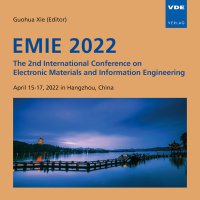La0.7Sr0.3FeO3-δ prepared by electrospinning as a cathode material for Proton-conducting Solid Oxide Fuel Cell
Konferenz: EMIE 2022 - The 2nd International Conference on Electronic Materials and Information Engineering
15.04.2022 - 17.04.2022 in Hangzhou, China
Tagungsband: EMIE 2022
Seiten: 4Sprache: EnglischTyp: PDF
Autoren:
Sun, Cuicui (School of Materials Science and Engineering, Changchun University of Science and Technology, Changchun, China & Key Laboratory of Functional Materials Physics and Chemistry of the Ministry of Education, Jilin Normal University, Changchun, China)
Duan, Qian (School of Materials Science and Engineering, Changchun University of Science and Technology, Changchun, China)
Inhalt:
At present, in order to cope with the global energy crisis, it has become a general trend to adjust the energy structure and vigorously develop renewable clean energy. Efficient and environmentally friendly proton-conducting solid oxide fuel cells (H+-SOFCs) have attracted much attention due to their high proton conductivity, low activation energy and moderate temperature operation. Electrospinning is one of the effective methods to prepare nanometer fiber materials with simple device, low cost and controllable process. Porous nanoscale La0.7Sr0.3FeO3-δ (LSF) fibers were prepared by electrostatic spinning and compounded with BaZr0.1Ce0.7Y0.2O3-δ (BZCY), and then applied to H+-SOFC as composite cathode materials. X-ray diffraction (XRD) analysis showed that LSF fibers obtained pure phase after heat treatment at 900 °C for 2h. The maximum output of the single cell was 544, 386 mW cm-2 at 700 °C and 650 °C, respectively. Scanning electron microscope (SEM) images showed that LSF-BZCY composite cathode exhibited loose and porous microstructure and maintained a filamentous microscopic morphology, closely binding with electrolyte BZCY. To sum up, LSF-BZCY with nanofiber structure shows great advantages as the cathode material of H+-SOFC and has a good application prospect.


